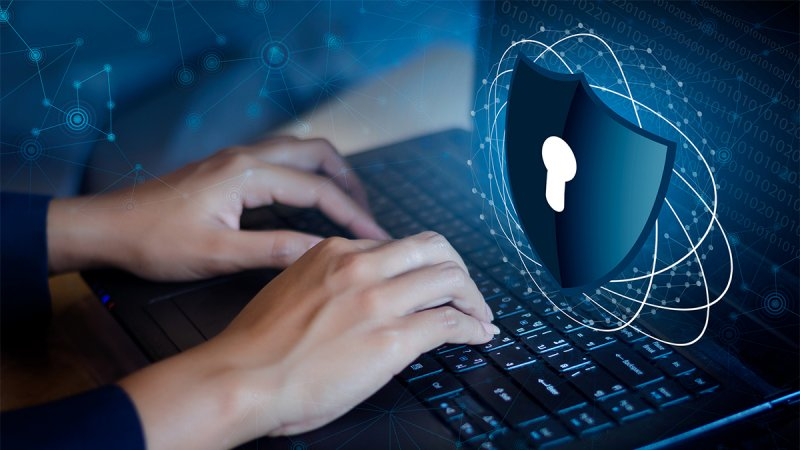Whether you’re suited and booted in the office on a Monday morning or at home in your slippers on a cosy Sunday night, you need to keep your computer safe from cyberattacks. By doing all you can to protect your PC, it’s possible to reduce the likelihood of hackers gaining unauthorised access to your machine and network and, as a result, you can keep your personal and business information private.
Hackers work in a number of ways, all with the same aim of gaining something for themselves. This might mean accessing your bank account first hand, selling your sensitive data on the dark web’s black market, or going as far as carrying out identity theft through piecing together the information they can find and posing as you online.
How to Keep Yourself Safe from Hackers:
Software
There is software you can use to protect your computer which will act as a deterrent for hackers on the lookout for an easy target. It’s true that no software can guarantee 100% protection, but it makes things much harder for the criminals to find access points, making it more likely that the attention of the hackers is diverted elsewhere.
Antivirus software works by carrying out regular scans of your computer and removing items of malware it detects as it goes. Combining antivirus software with firewalls (software that monitors incoming and outgoing network traffic on your machine) means that users will significantly reduce the chance of cyber criminals successfully infiltrating your machine.
Remember, all protection techniques need to be updated regularly to ensure they are up to date with the latest threats and know what to look for and must be combined with information security awareness training for the user (see below). The cybercrime scene is constantly developing due to hackers always wanting to find new ways they can attack users. This means that keeping your software up to date is paramount.

Emails
When emails first came about in the late 80s-early 90s, they became an easy target for cybercrime. They were, for all intents and purposes, an online postal system for hackers to direct attacks toward. Ensuring users remain vigilant about the risks involved with using emails is a simple way to increase your levels of protection, even as commonplace as email seems today.
59% of UK business leaders view emails as their greatest worry when it comes to hackers. This is because emails may include malicious attachments or links that, once clicked on, create an entry point for malware to infiltrate computer systems. This can then give hackers access to your personal information or lock you out of your system completely and demand money to take back control. Whichever way they do it, the problems can all start from an email.
Using an email security gateway is a good way to filter emails and get rid of suspicious looking items before they get the chance to hit inboxes. Gateways are able to detect and block harmful content from getting into the email network, as well as preventing the transmission of sensitive data such as credit card information. This harmful content could range from malware to phishing scams to general spam/unwanted content.
Passwords
A secure password is the first line of defence against hackers and cyber criminals. Although it seems simple, setting a good password is something that not enough people are prioritising. For example, the number one password currently under use is ‘password’, and not only this, but the same password is regularly being used for multiple accounts. This means that if a hacker cracks one password, they could potentially gain access to all your accounts, whether that means your social media or your online banking.
A strong password should be at least eleven non-sequential characters long, containing upper and lower-case letters, as well as numbers and symbols. This means that the software hackers use to crack passwords won’t get anywhere with yours, especially if you are updating them over time too. Cracking this password would take hundreds of years compared to only seconds for weak passwords.
Trying to remember a different password for each and every account can seem like a hard task, hence why people are tempted to cut corners in the first place. However, using a password manager is a much better, more secure, option. Password managers work by storing all your login details for each site all in one place securely, and changing them regularly. All you need to do is remember one password to access all of them.
By remembering your login for the manager, it will automatically enter your login details for the individual sites when you visit them. Think of it as a safe that stores all your valuable online information and encrypts it for you. Passwords, credit card numbers, security numbers, and any other sensitive data can all be saved into the manager, giving you peace of mind and freeing up some brain space!
Social media
The amount we use social media, and the amount of personal information we share without thinking about it means it’s a tempting platform for cyber criminals. Using information we share about ourselves, criminals can personalise their attack to appeal to our interests. They may also impersonate or take-over our contacts’ profiles and get us to click on fake websites, begin malicious downloads, or offer up confidential security information.
Remember, social media platforms allow users to control who sees information they put out there. If you use social media, you should be aware of your privacy settings, and review these regularly as they can change with new updates. Users should ensure they are only sharing information and pictures with people they know in real life and can verify are authentic.
Social media tip – save your holiday photos for when you return! Don’t advertise to your contact list that your house is empty.
Security in the Workplace
The steps you take to maintain the information security of your organisation are much the same as the individual protection measures listed above. The only difference is that the losses affect more people if they aren’t followed, and maintain security is as much about teamwork as it is about information security awareness.
Usually, the computer systems at a place of work are all linked via a network, so if one computer is infected, the malware can quickly spread to everyone in the organisation. This danger, combined with the use of mobile devices, means that malware can quickly spread far and wide. Keeping one computer safe isn’t enough, there needs to be consistency and communication throughout the whole company.
Training and Education
Keeping yourself safe in the workplace is the responsibility of everyone, starting from the top down.
Not only does information security training make employees aware of what to do should the worst happen, but it also means they are vigilant of the signs to look out for to prevent a hacker gaining access. At the end of the day, your employees are the first line of defence for your organisation, so educating them about security risks and best practice is one of the best ways to keep information secure on your computers.

